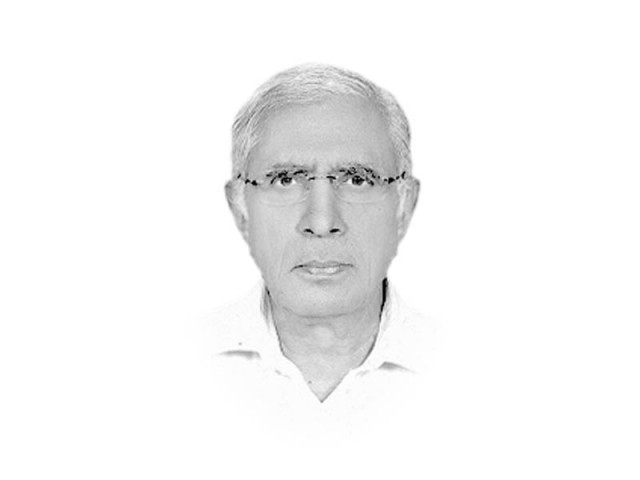The anatomy of corruption
There is no society in this wide world that can legitimately claim to be completely free of corruption

The writer served as Executive Editor of The Express Tribune from 2009 to 2014
In his research paper, “An Anatomy of Anti- Corruption” (October 27, 2015), author Reva Bhalla maintains that corruption is not the cause of lack of development but, in many cases, the effect of development and the resultant inequality of income distribution. Mainly, it is caused by a lack of strong institutions of governance. He, therefore, suggests that the following three issues should be tackled before launching an anti-corruption drive or putting an end to “dynastic politics”: 1) Consensus building within the elite on the basics of running the country; what the constitutional arrangement will be, how the rulers will be chosen and replaced, what the balance between the centre and the provinces will be, and between different ethnic, sectarian and other divisions of society, what the role of religion will be, how checks and balances will be placed on the powers of both the military and civilians; 2) How will we build institutions, which both check each other’s powers and at the same time lead to development of society; and 3) What kind of foreign and security policies should be adopted that can help maximise the development of our people and strengthen national sovereignty.
Bhalla then discusses three approaches to the issue: 1) “A developmental economic approach to corruption would lament the ‘resource curse’ afflicting countries that are overly dependent on extractive industries when large amounts of money taken in by state-owned firms are easily funnelled into the pockets of small political elite; 2) A sociological approach would emphasise the differences between cultures and how they perceive corruption. For example, the West looks down on the tribal tradition of handing out positions to one’s brother or cousin, but there are parts of the world where entrusting one’s business to a stranger would be considered outright reckless [Pakistan belongs to the latter category of countries]; and 3) Geopolitics will tell you countries that are physically difficult to govern will be more prone to bribery. If a country is internally fragmented by its geographic features, allowing for the development of distinct cultures and sects that need to be brought under some form of central rule, then patronage-building will likely be an ingrained practice of the government and it will be difficult, if not impossible, to root out corruption.”
Quoting Samuel Huntington, the author maintains that if institutions are too beholden to the political ego of the day, then a wide gap between the political elite and civil society will result, leaving ample room for a culture of impunity to develop at the top (Pakistan also suffers from this affliction). For several countries, the recent explosion of bribery scandals is the natural product of more than a decade of unprecedented economic growth. Huntington had even postulated that corruption could actually compensate for weak rule of law and provide an alternative path to grow when a country becomes bloated with bureaucracy. In other words, corruption will at least get things done in countries where the formal channels of government simply do not work. This is what is perhaps happening in Pakistan.
In Bhalla’s opinion, declining growth rates and internal political competition fuel the anti-corruption engine in any society. These two developments can also be seen to be driving Pakistan’s own anti-corruption drives. Under more stressful economic conditions, political competition will naturally escalate and civil society will be hyper-aware of abuses of political power. However, in some cases, anti-corruption initiatives will amount to little more than a political campaign, only to fizzle out within a couple of years. In other cases, corruption is so endemic that political and economic changes will have little impact on a country’s ranking.
Published in The Express Tribune, November 11th, 2015.
Like Opinion & Editorial on Facebook, follow @ETOpEd on Twitter to receive all updates on all our daily pieces.













COMMENTS
Comments are moderated and generally will be posted if they are on-topic and not abusive.
For more information, please see our Comments FAQ